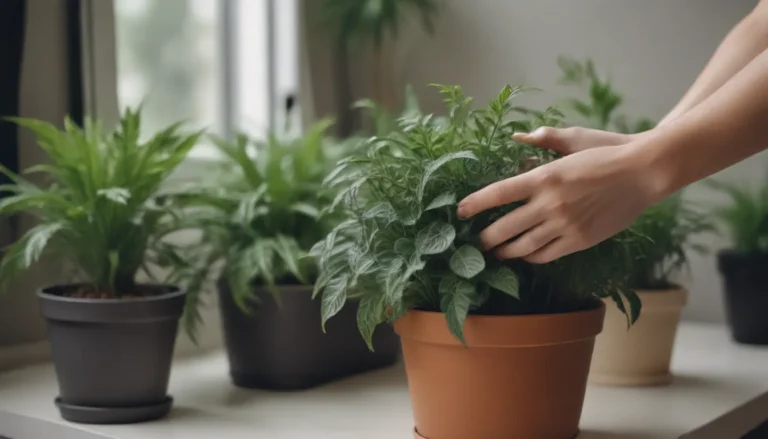Top 10 Reasons Why Your Hydrangeas Leaves are Turning Yellow

Hydrangeas are beloved for their beautiful blooms and lush green foliage, but nothing is more disheartening than seeing those leaves start to turn yellow. Yellowing leaves not only detract from the overall beauty of your hydrangeas, but they can also be a sign of underlying issues that need to be addressed. In this comprehensive guide, we will explore the top 10 reasons why your hydrangea leaves may be turning yellow and provide valuable tips on how to restore your plant to its vibrant, healthy state.
1. Improper Watering
One of the most common reasons for yellowing leaves on hydrangeas is improper watering. Both overwatering and underwatering can lead to yellow, wilted foliage. Here’s what to look out for:
Overwatering
- Leaves appear limp and droopy, even in the morning
- Yellowing occurs before the leaves turn brown and mushy
- Soil around the base of the plant is overly wet and soggy
To remedy overwatering, allow the soil to dry out between waterings and avoid excessive irrigation.
Underwatering
- Leaves turn yellow with brown, crispy edges
- Avoid watering excessively, as it can worsen the issue
- Deeply water the plant until the soil is slightly moist
Remember to water your hydrangeas deeply two to three times a week, especially during hot, dry periods, and consider adding mulch to retain soil moisture.
Poor Drainage
Hydrangeas prefer well-draining soil to thrive. If your plant is in clay soil or an area prone to puddling, it may be suffering from poor drainage. Test the soil by digging a hole and observing how quickly water is absorbed. Consider amending the soil with compost and sand to improve drainage.
2. Improper Sun Exposure
Hydrangeas thrive in morning sun and afternoon shade, with some cultivars able to tolerate more direct sunlight. Improper sun exposure can lead to yellowing leaves:
Leaf Scorch
- Leaves turn yellow, brown, and crispy due to excessive direct sunlight during the hottest part of the day
Insufficient Light
- Lack of sunlight slows photosynthesis and interrupts chlorophyll production
- Choose a location with proper lighting conditions or consider relocating your shrub to a sunnier spot.
3. Poor Soil Quality
Planting hydrangeas in poor-quality soil can contribute to various issues, including yellowing leaves. Test your soil’s pH level and consider amending it as needed:
Wrong Soil pH
- Hydrangeas thrive in slightly acidic soil with pH levels of 5.0 to 6.5
- Adjust soil pH by adding lime to raise acidity or aluminum sulfate to lower it
Ensure your hydrangeas are planted in soil that meets their pH requirements for optimal growth and leaf color.
4. Nutrient Deficiency
Nutrient deficiencies, such as nitrogen, iron, and magnesium, can cause yellowing leaves on hydrangeas. Here’s what to watch for:
Nitrogen Deficiency
- Yellowing leaves that drop prematurely in spring
- Work in compost and apply a balanced fertilizer for acid-loving plants to address nitrogen deficiencies
Iron Deficiency
- New leaves turn yellow while veins remain green
- Treat with chelated iron and adjust soil pH to improve iron uptake
Magnesium Deficiency
- Yellow leaves with green veins, primarily on older leaves
- Add Epsom salts or dolomite lime to amend magnesium deficiency
Check for nutrient deficiencies and adjust your fertilization routine to provide the necessary nutrients for healthy foliage.
5. Incorrect Fertilization
Improper fertilization can lead to yellowing leaves on hydrangeas. Use fertilizers designed for acid-loving plants and follow package directions to avoid nutrient imbalances.
6. Disease
Hydrangeas are susceptible to fungal, bacterial, and viral diseases that can cause yellowing leaves. Practice good sanitation to prevent disease spread:
Hydrangea Mosaic Virus
- Viral disease causing yellowing of foliage
- Use sterile tools for pruning and consider disease-resistant varieties
Tomato Ringspot Virus
- Caused by nematodes and leads to yellowing of leaves
- Look for disease-resistant varieties to prevent infection
Ensure proper disease prevention measures are in place to protect your hydrangeas from harmful pathogens.
7. Pests
Pests, such as two-spotted spider mites, can damage hydrangea leaves and lead to discoloration. Be on the lookout for signs of pest infestations:
- Yellow and white spots on leaves, followed by holes and defoliation
- Check the undersides of leaves for fine webbing and damage
Treat pest infestations promptly with neem oil or horticultural oil to prevent further damage to your hydrangeas.
By addressing these common issues that cause yellowing leaves on hydrangeas, you can ensure that your plants remain healthy and vibrant throughout the growing season. Remember to monitor your hydrangeas closely, provide the proper care and maintenance they need, and enjoy the stunning blooms and foliage they have to offer. With a little attention and effort, you can keep your hydrangeas looking their best year after year.





